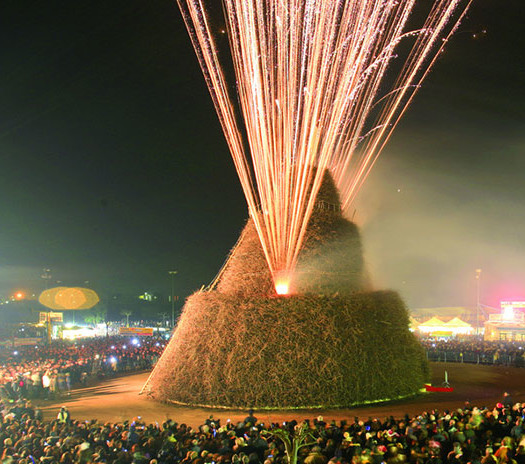
Otranto, la cava di bauxite, laghi alimini
6 Febbraio 2024In Christianity, Lent is the period of forty days that anticipates Easter and corresponds to the forty days spent by Jesus fasting and praying in the desert of Judea, as told by the Gospels.
In some areas of the country, there are rituals and customs associated with this time of the year that date back centuries
In the Salentine area, for exemple, it was more usual, in the past, walking through the streets of the municipalities during the Lenten period, come across a strange puppet suspended between two balconies or hanging in the middle of the street. The doll was depicted as an old black – clad woman holding the spindle in one hand and a bitter orange pierced by seven chicken feathers in the other.
The puppet symbolically represented the features of the wife of Carnival who died for too many revelries after having squandered all his possessions leaving his poor widow in total misery and forced to work to repay her husband’s debts . Hence the meaning of the objects represented on the puppet: the spindle ( or other tools) represented the laboriousness but, at the same time, the flow of time, while the feathers stuck in the orange were the symbol of the weeks of penance and fasting that precede Easter .
When Easter came, the puppet was removed, burned or exploded using firecrackers in a sort of ritual designed to purify, through the flames, the many sins thus giving way to a new life.
In the city of Lecce you can no longer see the Caremmas , but the tradition is still alive in some villages of Salento as in the territory around Gallipoli, in the neiborough of Capo di Leuca or in Grecìa Salentina( the greek language enclave)





